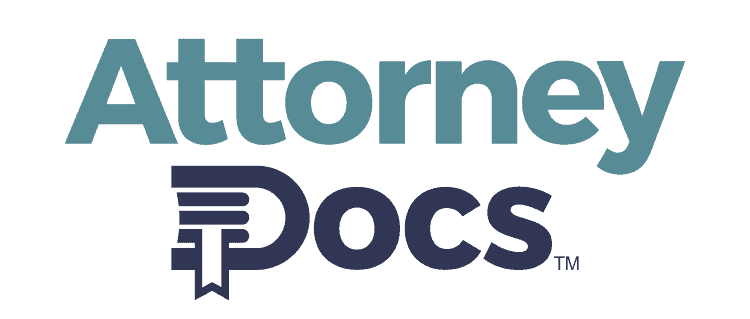Order Granting in Part And Denying In Part Motions To Exclude Gang Expert Testimony
Ordering that the government provided gang expert witnesses testimonies is limited on the basis that the testimony will not meet the reliability requirements of Rule 702.
Plaintiff’s First Amended Draft Jury Instructions and Verdict Forms
PLAIINTIFF’S FIRST AMENDED DRAFT JURY INSTRUCTIONS AND VERDICT FORMS Negligence, COMPARATIVE NEGLIGENCE OF PLAINTIFF — SINGLE DEFENDANT — NO DESIGNATED NONPARTY INVOLVED, NEGLIGENT MISREPRESENTATION CAUSING FINANCIAL LOSS IN A BUSINESS TRANSACTION — ELEMENTS OF LIABILITY, BREACH OF EXPRESS WARRANTY UNDER U.C.C. — ELEMENTS OF LIABILITY
Plaintiffs’ Brief on the Issue of Bifurcation
Plaintiff provides the instant brief on the issue of whether bifurcation of the liability and damages phases of the trial of this action is necessary. Bifurcation is a judge’s ability in law to divide a trial into two parts so as to render a judgment on a set of legal issues without looking at all aspects. In a bifurcated case, the issues of liability and damages are decided separately. The trier of fact will only decide the issue of liability at the first trial. If the defendant is not found to be liable, then there will be no damages trial.
PLAINTIFFS’ MOTION FOR LEAVE TO FILE RESPONSE IN OPPOSITION TO DEFENDANT’S MOTION TO BIFURCATE TRIAL OF LIABILITY AND DAMAGES ISSUES OUT OF TIME
Plaintiff’s motion for leave to file response in opposition to defendant’s motion to bifurcate trial of liability and damages issues out of time.
Plaintiffs’ Motion in Limine to Preclude Defendants from Referencing Legally Incorrect Standard of Foreseeability Under Colorado’s Premises Liability Statue
PLAINTIFFS’ MOTION IN LIMINE TO PRECLUDE DEFENDANTS FROM REFERENCING LEGALLY INCORRECT STANDARD OF FORESEEABILITY UNDER COLORADO’S PREMISES LIABILITY STATUTE
Premise liability and assault Complaint
Complaint against bar owner for failure to provide a safe environment for patron as well as complaint against unknown person who assaulted client
Product Liability Complaint
Strict Liability complaint for product liability
Product Liability Lawsuit – Federal Court Civil Complaint and Jury Demand
Federal Court Civil Complaint, including claims for Strict Liability, Product Liability-Failure to Warn, Negligence, Breach of Warranty- Express and Implied, Fraud, Fraudulent Concealment, and Negligent Representation.
Product liability is the area of law in which manufacturers, distributors, suppliers, retailers, and others who make products available to the public are held responsible for the injuries those products cause.
Product Defects: Responsible Parties
For product liability to arise, at some point the product must have been sold in the marketplace. Historically, a contractual relationship, known as “privity of contract,” had to exist between the person injured by a product and the supplier of the product in order for the injured person to recover. In most states today, however, that requirement no longer exists, and the injured person does not have to be the purchaser of the product in order to recover. Any person who foreseeably could have been injured by a defective product can recover for his or her injuries, as long as the product was sold to someone.
Liability for a product defect could rest with any party in the product’s chain of distribution, such as:
-The product manufacturer;
-A manufacturer of component parts;
-A party that assembles or installs the product;
-The wholesaler; and
-The retail store that sold the product to the consumer.
Remodeling Contract
Remodeling Contract Template
Utilize this easy and fast remodeling contract template. It’s mandatory for contractors providing residential remodeling services to prepare a Remodeling Contract that contains legal terms and conditions.
Remodeling Contract – Legal Document
This product states who the contract is between, date the contract was signed, the contractor’s address, project address, contract price, licensing, approximate start date, approximate completion date, drawings and permits, property lines, access to work, financing, standard materials, nonstandard materials, hazardous materials, work allowance and conflict, mechanics’ lien warning, change orders and amendments, preparation and work, extra work and changes, plumbing, electrical service, plaster, filled ground or rock, termite work, removal of material and debris, extra time, damage to project and insurance, commercial general liability insurance, workers compensation insurance, protections of owner’s property, guarantee of materials and workmanship, work stoppage, completion and occupancy, notice, integration clause, corrective or repair work, arbitration of disputes, attorneys’ fees, and information about contractors’ state license board.
Repair Release Agreement
A form used by contractor to begin work on an item that needs repair releasing contractor from liability
Residential Lease Agreement-Landlord and Tenant-California
This product gives description of when the lease agreement was made, between who the agreement was made, the location of the premises, the terms included in the agreement, the amount the rent is per month, the security deposit, use of premises, smoking, management, how many authorized occupants, furnishing provided, how damages would be fixed, information about the keys, the type of storage provided, parking, maintenance, utilities and services, taxes, property insurance, non-sufficient funds, failure to pay, defaults, termination upon sale of premises, early termination clause, military termination clause, destruction or condemnation of premises, habitability, holdover, cumulative right, remodeling or structural improvements, access by landlord to premises, indemnity regarding use of premises, accommodation, dangerous materials, asbestos, compliance with regulations, subletting, individual liability, inspection of premises, nuisance, lead disclosure, mold, hazardous materials disclosure, Governing law, entire agreement, waiver, tenant representation, binding effect, dispute resolution, receipt, and inspection checklist.
Residential Lease Agreement-Landlord and Tenant-Florida
This product gives description of when the lease agreement was made, between who the agreement was made, the location of the premises, the terms included in the agreement, the amount the rent is per month, the security deposit, use of premises, smoking, management, how many authorized occupants, furnishing provided, how damages would be fixed, information about the keys, the type of storage provided, parking, maintenance, utilities and services, taxes, property insurance, non-sufficient funds, failure to pay, defaults, termination upon sale of premises, early termination clause, military termination clause, destruction or condemnation of premises, habitability, holdover, cumulative right, remodeling or structural improvements, access by landlord to premises, indemnity regarding use of premises, accommodation, dangerous materials, asbestos, compliance with regulations, subletting, individual liability, inspection of premises, nuisance, lead disclosure, mold, hazardous materials disclosure, Governing law, entire agreement, waiver, tenant representation, binding effect, dispute resolution, receipt, and inspection checklist.















